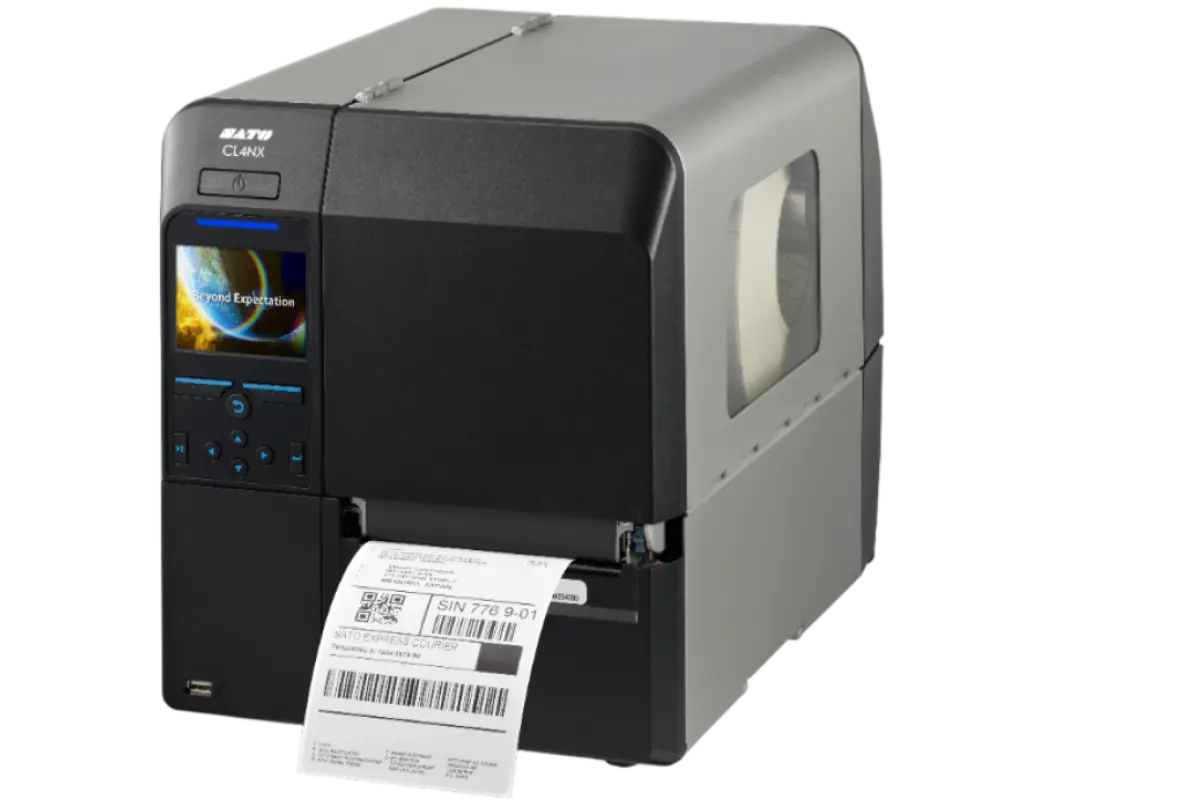Thermal transfer printing
Thermal transfer printing, also known as thermal transfer printing or TTO, is a proven printing technology that uses heat to transfer the colour of a special ink ribbon onto a medium to be printed. The colour is melted and permanently fixed to the material. This method ensures excellent print quality and high resistance to environmental influences such as moisture, abrasion, heat and chemicals.
How thermal transfer printing works
During the printing process, the colour ribbon is guided between the print head and the material to be printed. The print head heats specific areas of the ribbon, which transfers the colour to the medium. This makes thermal transfer printing particularly precise and enables razor-sharp reproduction of text, images, barcodes and variable data.
Areas of application and advantages
Thermal transfer printing is primarily used in industries where high print quality, durability and flexibility are required. These include
- Logistics and shipping: Durable labels for warehousing and shipping.
- Industry: Labelling of products, machines and devices.
- Retail: Labels with barcodes, prices and product information.
- Pharmaceuticals and chemicals: Labelling that is resistant to chemicals and extreme temperatures.
- Textile industry: care labels and product markings on fabrics.
A decisive advantage of thermal transfer printing is the versatility in the choice of print media. In addition to uncoated paper, plastics such as polypropylene, polyethylene or polyimide as well as textiles and metallised surfaces can also be printed on. This makes TT printing an ideal solution for a wide range of applications.
Materials and ribbon selection
Choosing the right colour ribbon is a key aspect of achieving optimum results. There are three main types of ribbon:
- Wax ribbons: cost effective and ideal for printing on paper.
- Wax-resin ribbons: Offer a blend of flexibility and durability, suitable for paper-based and plastic surfaces.
- Resin ribbons: Particularly robust, ideal for hard surfaces and applications requiring extreme durability.
The combination of ribbon, print head and material to be printed allows for a high degree of flexibility in the design of labels, for example for extreme environments or specific industry requirements.
Why thermal transfer printing?
Thermal transfer printers offer decisive advantages over other printing technologies such as direct thermal printing or inkjet printing. While direct thermal printing relies on the durability of the surface and inkjet printing often offers less durability, TT printing delivers long-lasting results with high resistance.
The technology is particularly suitable for applications where:
- long-lasting readability of barcodes and text is required,
- labels are exposed to extreme conditions,
- variable data such as serial numbers or production data must be printed.
Conclusion
Thermal transfer printing is an efficient and flexible technology that is characterised by its durability and precision. It offers broad material compatibility and is perfect for demanding labelling tasks in a wide range of industries. With this technology, companies rely on a reliable solution that guarantees the highest print quality even in difficult areas of application.

